
Genosha becomes a centerpiece for mutants for decades to come after 1988, where it is the setting for Wolverine’s first solo stories (since his titular, groundbreaking miniseries in 1984) and this arc of X-Men issues.

Their government is hunting and executing mutants.
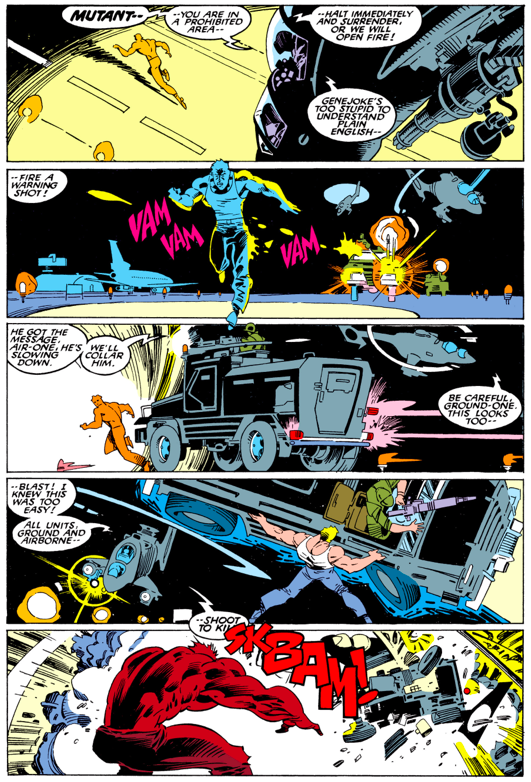
Mutants are fleeing the land of Genosha to seek amnesty in Australia, where the “dead” X-Men are hiding out. I’m not clear on why Australia is a sanctuary country, but it is—maybe that’s why the X-Men were sent there after “dying” at the end of Fall of the Mutants. Genoshans have their own slur for mutants…

Madelyne Pryor–one of the not-dead Uncanny X-Men, and the only one who is not a mutant (but is the mother of one)–runs a sort of underground railroad for mutants, bringing them into Australia with a woman named Jenny Ransome.
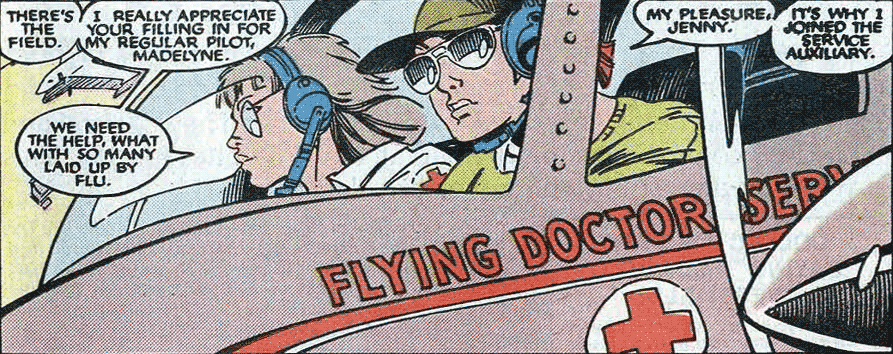
The Genoshan government goes to Australia to kidnap them, taking own their plane.

We meet Genosha’s genetically enhanced army, called The Press Gang: HawkShaw, Wipeout, Pipeline (who can turn people into transportable wavelengths) …

…And Punchout, who is a strong black woman.

They’re led by a Chief Magistrate, who also leads a Magistrate army (think Judge Dredd), named Chief Magistrate Tam Anderson.

Madelyne’s partner in her efforts to save mutants, Jenny Ransome, is the girlfriend of the head Genengineer…

…a scientist who takes latent mutants and speeds up their growth process—and who created the Press Gang (a subgroup of the Magistrates). His real name is Dr. Moreau.

Not subtle, but cute, Mr. Claremont.
So, she’s captured.
The X-Men go to the site of her crash to find her.
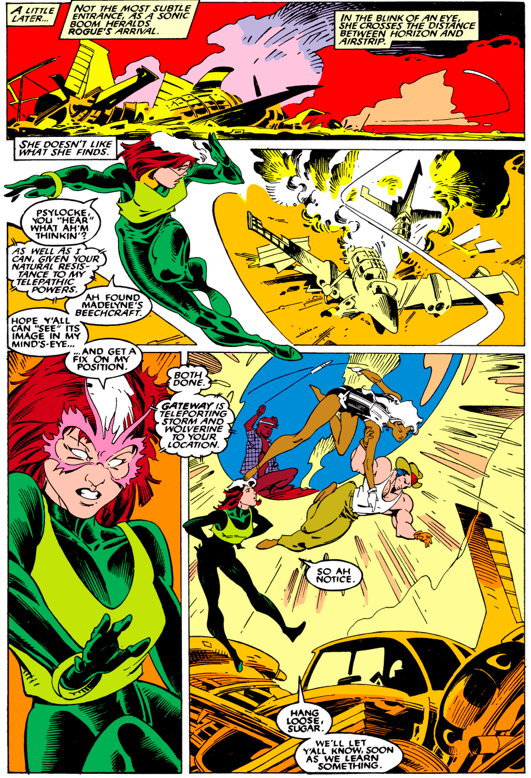
And of course, the heroes meet the Press Gang and the Genoshan soldiers.
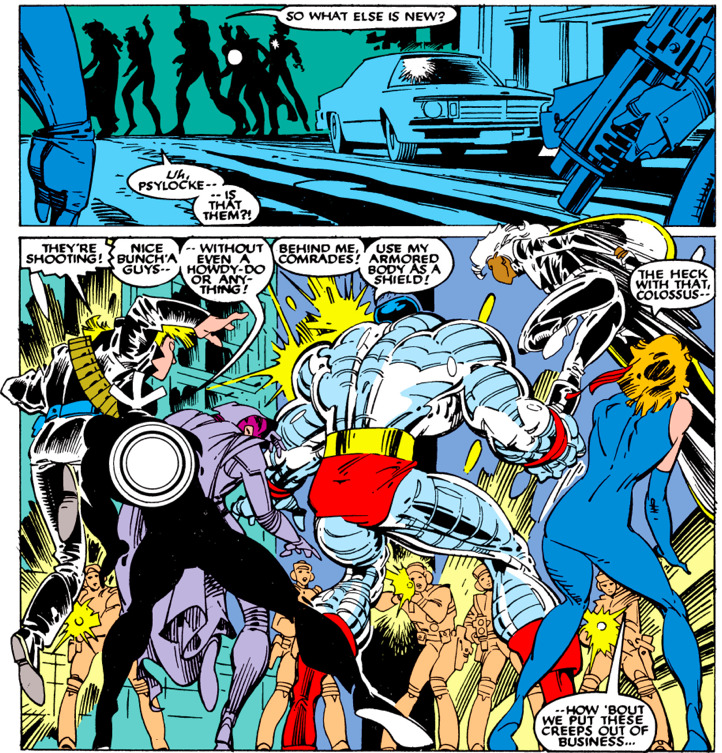

But before the fight continues much further, their powers are negated by a Press Gang soldier named Wipeout.

The Press Gang capture Rogue and Wolverine.

But it’s not easy to contain them at first. Once subdued…

… we see that the Magistrates rape Rogue when they capture her. How could they do that without touching her skin? Because Press Gang member Wipeout’s power is to “wipe out” other mutants’ powers. Ugh.

We get multiple pages inside of Rogue’s head, where she deals with her rape trauma by talking to Carol Danvers, from whom she permanently stole memories and powers way back in her first appearance in Avengers Annual #10, one of the best comics of all time.
She uses this hallucinating interlude to come to terms with her guilt over having taken Danvers’ mind from her.
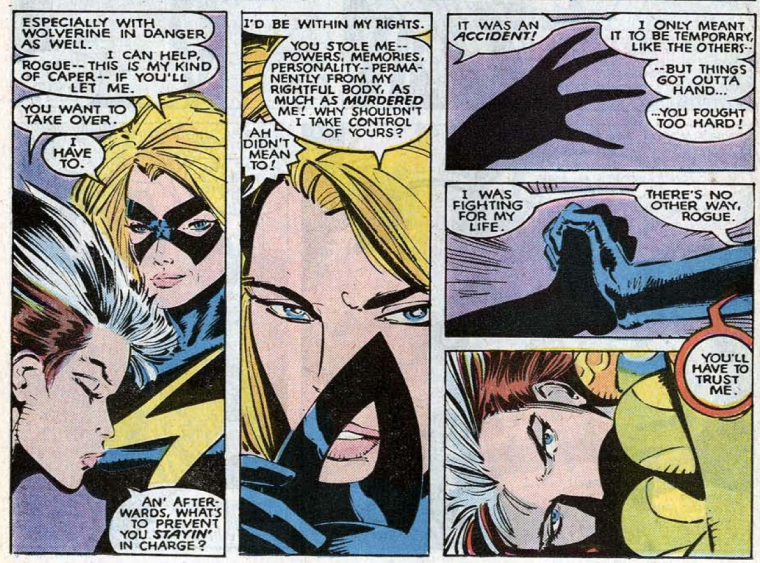
Once she “accepts” her Danvers side, and allows it to take over, she gains Danvers’ military training.
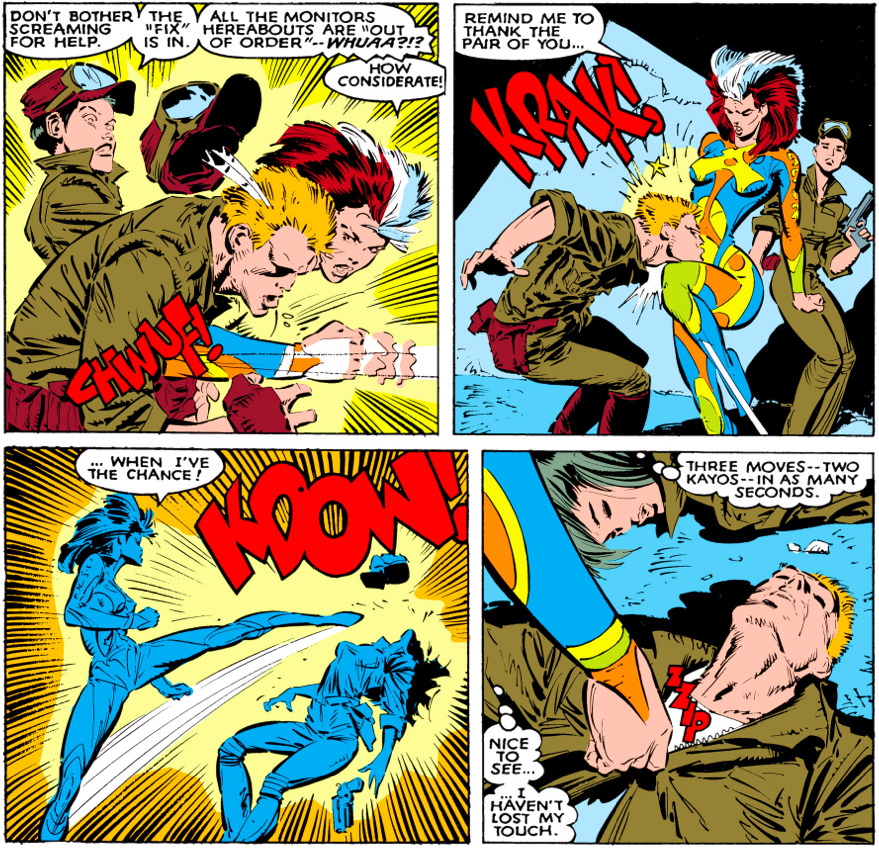
The rapists return and she is able to overcome them and free Wolverine.

They escape prison and hide out in the land of Genosha, which lets Claremont show us more of the oppressive country.
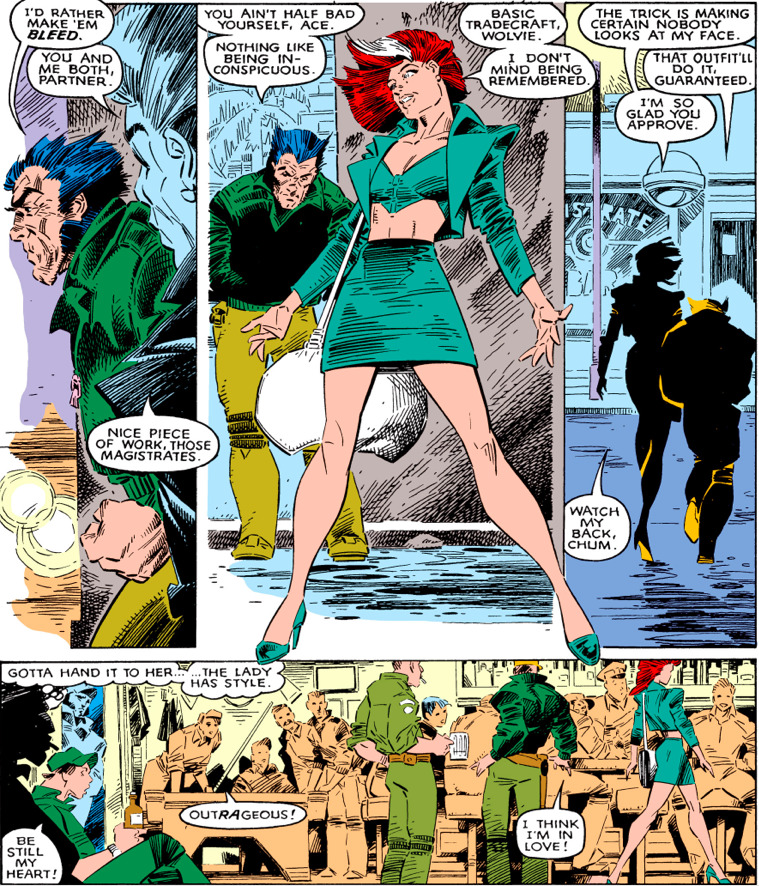
The duo hide out in the city, waiting for the cavalry.

Meanwhile, Madelyne Pryor (remember her, she got captured?) is being experimented on by the Magistrates because, like her “dead” X-Men, she is magically blessed with the power to never have her picture taken. When the X-Men were returned to Australia, a spell was cast to help them avoid detection. The Magistrates are trying to figure out how she does it.

But at the same time, the demon N’astirh, who she met (along with S’ym) in Limbo in the last X-Men arc, has also been reaching out to Maddie—and he empowers her and gives her a black leather costume again.

Eventually, the other X-Men arrive in Genosha. Psylocke is pretty pissed when she finds out what the Magistrates are up to…
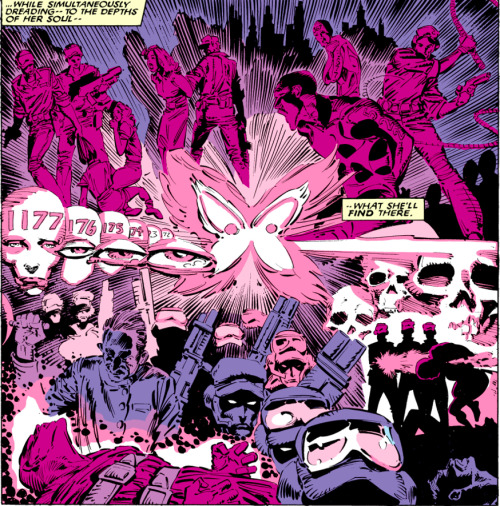
The team finds Rogue (who still has Carol Danvers’ personality), and Wolverine, who have been leading a revolution.

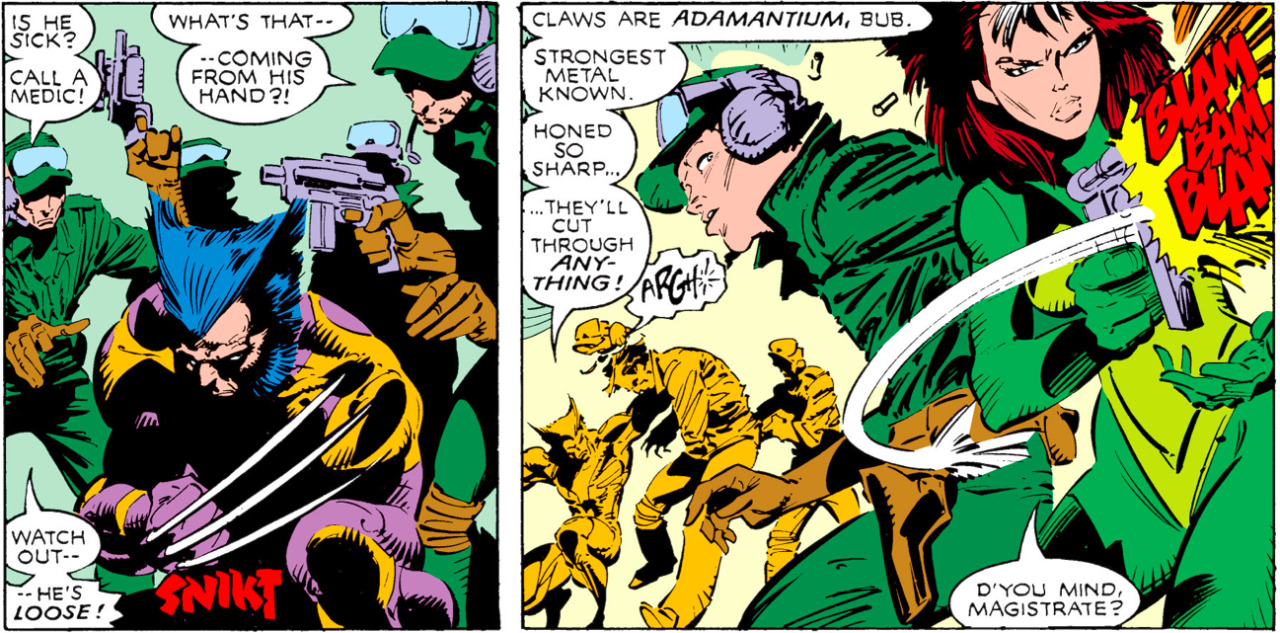
With Jenny Ransome’s knowledge of Genosha, they help the Genegineer’s son, Philip Moreau, overthrow the anti-mutant government and lead a post-apartheid state.
When they confront the government leaders, Wolverine refers to himself as “patch” for the first time.
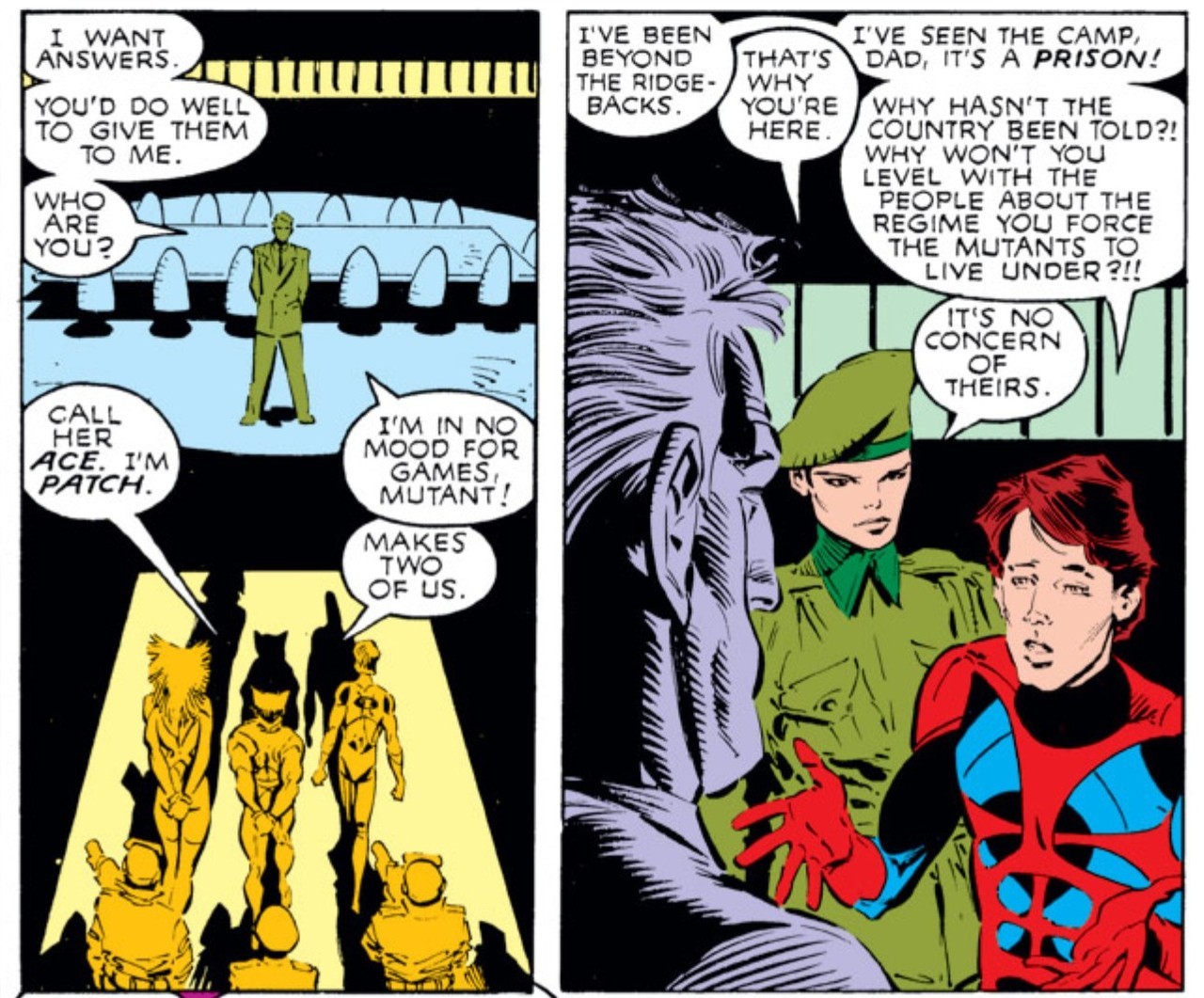
This will be his nickname in the Wolverine solo series, much of which will take place in Genosha.
They leave Genosha in Phillip’s hands.

A very complex tale.
Art is by Rick Leonardi, with Marc Silvestri on #236 only. It’s also worth mentioning that Uncanny X-Men was now coming out twice a month, so Claremont was writing furiously, seeding multiple storylines and threads. This essential arc comes right before Inferno, one of the most famous X-events of all time. The hectic schedule probably explains why Marc Silvestri did a fill-in for art on issue #236.
